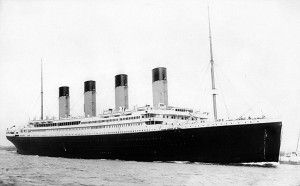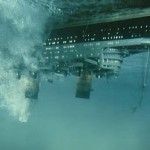How hard is to assess which risks to mitigate? It turns out to be pretty hard.
Let’s start with a model of risk so simplified as to be completely unrealistic, yet will still retain a key feature. Suppose that we managed to translate every risk into some single normalized unit of “cost of expected harm”. Let us also suppose that we could bring together all of the payments that could be made to avoid risks. A mitigation policy given these simplifications must be pretty easy: just buy each of the “biggest for your dollar” risks.
Not so fast.
The problem with this is that many risk mitigation measures are discrete. Either you buy the air filter or you don’t. Either your town filters its water a certain way or it doesn’t. Either we have the infrastructure to divert the asteroid or we don’t. When risk mitigation measures become discrete, then allocating the costs becomes trickier. Given a budget of 80 “harms” to reduce, and risks of 50, 40, and 35, then buying the 50 leaves 15 “harms” that you were willing to pay to avoid left on the table.
Alright, so how hard can this be to sort this out? After all, just because going big isn’t always the best for your budget, doesn’t mean it isn’t easy to figure out. Unfortunately, this problem is also known as the “0−1 knapsack problem”, which computer scientists know to be NP-complete. This means that there isn’t any known process to find exact solutions that are polynomial in the size of the input, thus requiring looking through a good portion of the potential solution combinations, taking an exponential amount of time.
What does this tell us? First of all, it means that it isn’t appropriate to expect all individuals, organizations, or governments to make accurate comparative risk assessments for themselves, but neither should we discount the work that they have done. Accurate risk comparisons are hard won and many time-honed cautions are embedded in our insurance policies and laws.
However, as a result of this difficulty, we should expect that certain short-cuts are made, particularly cognitive short-cuts: sharp losses are felt more sharply, and have more clearly identifiable culprits, than slow shifts that erode our capacities. We therefore expect our laws and insurance policies to be biased towards sudden unusual losses, such as car accidents and burglaries, as opposed to a gradual increase in surrounding pollutants or a gradual decrease in salary as a profession becomes obsolete. Rare events may also not be included through processes of legal and financial adaptation. We should also expect them to pay more attention to issues we have no “control” over, even if the activities we do control are actually more dangerous. We should therefore be particularly careful of extreme risks that move slowly and depend upon our own activities, as we are naturally biased to ignore them compared to more flashy and sudden events. For this reason, models, games, and simulations are very important tools for risk policy. For one thing, they make these shifts perceivable by compressing them. Further, as they can move longer-term events into the short-term view of our emotional responses. However, these tools are only as good as the information they include, so we also need design methodologies that aim to broadly discover information to help avoid these biases.
The discrete, “all or nothing” character of some mitigation measures has another implication. It also tells us that we wouldn’t be able to make implicit assessments of how much individuals of different income levels value their lives by the amount they are willing to pay to avoid risks. Suppose that we have some number of relatively rare risks, each having a prevention stage, in which the risks have not manifested in any way, and a treatment stage, in which they have started to manifest. Even if the expected value favors prevention over treatment in all cases, if one cannot pay for all such prevention, then the best course in some cases is to pay for very few of them, leaving a pool of available resources to treat what does manifest, which we do not know ahead of time.
The implication for existential and other extreme risks is we should be very careful to clearly articulate what the warning signs for each of them are, for when it is appropriate to shift from acts of prevention to acts of treatment. In particular, we should sharply proceed with mitigating the cases where the best available theories suggest there will be no further warning signs. With existential risks, the boundary between remaining flexible and needing to commit requires sharply different responses, but with unknown tipping points, the location of the boundary is fuzzy. As a lack of knowledge knows no prevention and will always manifest, only treatment is feasible, so acting sharply to build our theories is vital.
We can draw another conclusion by expanding on how the model given at the beginning is unrealistic. There is no such thing as a completely normalized harm, as there are tradeoffs between irreconcilable criteria, the evaluation of which changes with experience across and within individuals. Even temporarily limiting an analysis to standard physical criteria (say lives), rare events pose a problem for actuarial assessment, with few occurrences giving poor bounds on likelihood. Existential risks provide no direct frequencies, nor opportunity for an update in Bayesian belief, so we are left to an inductive assessment of the risk’s potential pathways.
However, there is also no single pool for mitigation measures. People will form and dissolve different pools of resources for different purposes as they are persuaded and dissuaded. Therefore, those who take it upon themselves to investigate the theory leading to rare and one-pass harms, for whatever reason, provide a mitigation effort we might not rationally take for ourselves. It is my particular bias to think that information systems for aggregating these efforts and interrogating these findings, and methods for asking about further phenomena still, are worth the expenditure, and thus the loss in overall flexibility. This combination of our biases leads to a randomized strategy for investigating unknown risks.
In my view, the Lifeboat Foundation works from a similar strategy as an umbrella organization: one doesn’t have to yet agree that any particular risk, mitigation approach, or desired future is the one right thing to pursue, which of course can’t be known. It is merely the bet that pooling those pursuits will serve us. I have some hope this pooling will lead to efforts inductively combining the assessments of disparate risks and potential mitigation approaches.





